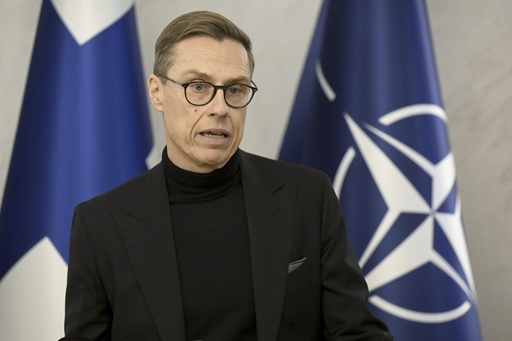BRUSSELS — On Friday, NATO Secretary-General Mark Rutte announced that the military alliance intends to escalate its patrol activities in the Baltic Sea area, as Finnish authorities continue to investigate potential sabotage linked to a Russian vessel concerning undersea cables.
Finnish officials took control of the ship, identified as the Eagle S, on Thursday, as they probe whether it had inflicted damage on a power cable that connects Finland and Estonia, in addition to several data cables. This incident is part of a growing trend of disruptions affecting critical infrastructure within the region.
In an update posted on X, Rutte stated that he had conversed with Finland’s President Alexander Stubb regarding the ongoing investigation led by Finnish authorities about the possible sabotage of undersea cables. He affirmed that NATO would be “enhancing its military presence in the Baltic Sea.”
When inquired about specific actions or timelines, NATO sources maintained that the alliance, consisting of 32 member countries, “remains vigilant and is working to provide further support, including by enhancing our military presence” in the affected areas.
Finland, which shares a border of over 1,300 kilometers with Russia, joined NATO in 2023, ending a long-standing stance of neutrality in its foreign policy. In an effort to address similar previous incidents, NATO and its associates deployed additional maritime patrol aircraft, long-range radar planes, and drones for surveillance and reconnaissance missions, alongside a fleet of minehunters sent to the area in October 2023.
The Eagle S carries a flag from the Cook Islands but has been linked by Finnish customs and European Union officials to Russia’s covert fleet, which transports oil and gas in violation of international sanctions established due to the ongoing conflict in Ukraine.
These aging vessels, often with unclear ownership details, typically operate without insurance compliant with Western regulations, raising concerns about environmental risks posed by potential accidents resulting from their deteriorating condition.
Reports from Finland’s Yle state broadcaster, citing police statements, suggest that the ship’s anchor may have caused damage to the cable. When questioned about the ship’s seizure, Kremlin spokesperson Dmitry Peskov opted not to comment.
Following a crucial meeting centered on the incident, President Stubb wrote on X that the “situation is under control” and that there are “no reasons to worry,” while confirming that the investigation continues and that both Finland and Estonia have requested additional NATO support.
Potential new countermeasures may include “inspections of the insurance certificates of vessels” operating in the area, according to Stubb, who expressed that they are also exploring avenues under international maritime law to respond more effectively to similar incidents in the future.
The Estlink-2 power cable, which transmits electricity from Finland to Estonia, experienced an outage on Wednesday but did not significantly disrupt services. This incident follows previous damage to two data cables, as well as the Nord Stream gas pipelines, which have also been labeled as instances of sabotage.
In November, two data cables—one connecting Finland to Germany and the other between Lithuania and Sweden—were severed, with Germany’s defense minister suggesting sabotage was the likely culprit, though he did not provide evidence or identify any suspects.
Additionally, the Nord Stream pipelines, which previously transported natural gas from Russia to Germany, were damaged by underwater explosions in September 2022. Authorities have confirmed that sabotage was the cause, prompting ongoing criminal investigations.
NATO had already ramped up patrols around undersea infrastructures following the Nord Stream incident. The alliance set up a coordination cell last year to strengthen collaboration among governments, armed forces, and the defense industry to ensure the better protection of undersea facilities.
Copyright @2024 | USLive | Terms of Service | Privacy Policy | CA Notice of Collection | [privacy-do-not-sell-link]



